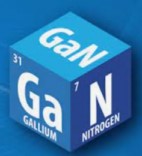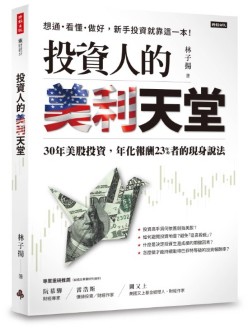We mentioned in my blog post “Gen 3 semiconductor” that gallium nitride (GaN) is one of the two main protagonists of third-generation semiconductors. I suggest you, be sure to read this previous post first, and then read on.
Advantages of gallium nitride
Navitas (ticker: NVTS) claims that they produce gallium nitride power semiconductors that are 20 times faster than conventional silicon wafers and can transmit 3 times the voltage at half the size and weight of silicon wafers.
At the investor meeting in June 2021, Navitas CEO Gene Sheridan demonstrated a mobile phone charger made of gallium nitride chips, which is half the size of a general charger and takes half an hour It can be fully charged by 50%. The next-generation gallium nitride charger, Sheridan said, aims to charge 50 percent of its power in eight minutes.
Current development
The development of the third generation of semiconductors is mostly towards GaN on SiC (Gallium Nitride on Silicon Carbide) and GaN on Si (Gallium Nitride on Silicon). The former is applied to the high frequency of the base station, and the latter is mostly applied to the mid-low frequency part.
Although there are differences in high and low frequency applications, both have their own challenges to overcome. The former lies in the fact that silicon carbide (SiC) substrates are mainly in the hands of a few international manufacturers, such as Wolfspeed (ticker: WOLF). This keeps the cost high. The latter lies in the fact that the compound material is on the silicon substrate, and there are process problems such as lattice mismatch that need to be overcome.
Price
Although gallium nitride chargers are powerful, they are 20% more expensive than silicon chip chargers. Sheridan predicts that within two years, the cost of gallium nitride chargers will be equal to that of silicon chargers, and in three years, gallium nitride chargers will be cheaper than silicon chargers.
Application areas
At present, gallium nitride is mainly used in small systems such as fast charging of batteries in mobile devices, such as mobile phones and laptops; GaN power chip maker Nanowei predicts that in 5 years, mobile phone chargers will abandon traditional silicon chips and turn to embrace Gallium Nitride Semiconductor.
But since electric vehicles are the biggest market, gallium nitride has of course already entered this market.
In addition to the common fast charging devices for automobiles and consumer electronics, whether it is the phased radar on the warship or the Insulated Gate Bipolar Transistor (IGBT) device on the high-speed rail, gallium nitride and other materials have extensive and essential applications, the civilian market, the military market, and the future scale ceilings are all high.
Potential market
TrendForce predicts that the third-generation semiconductor silicon carbide/gallium nitride power market will reach US$4.71 billion in total in 2025, a CAGR of 45% compared to US$730 million in 2020. Although the growth rate is high, there is a difference of more than 5 times between the forecast values of nano-Microelectronics in 2026 when the market exceeds 20 billion US dollars.
Navitas believes that gallium nitride has a huge market potential, and the market size of silicon power semiconductors is US$9 billion in 2020 and is estimated to increase to US$13 billion in 2026. The gallium nitride market is expected to triple annually, reaching a market value of $2 billion in 2026, accounting for 16% of the overall power chip market. In addition, Nanowei also produces onboard chargers, which are three times faster than ordinary electric chargers, and related technologies can also help solar panels become more popular.
Main vendors
Innoscience
Calculated based on the converted shipment volume of GaN discrete devices, in 2023, InnoScience in mainland China ranked first in market share among global GaN power semiconductor companies, with a market share of 42.4%. As of June 2024, cumulative shipments will exceed 850 million units.
Innoscience achieved revenue of approximately RMB 593 million in 2023, an increase of 769% compared to 2021. According to Frost & Sullivan, Innoscience will rank first among all gallium nitride power semiconductor companies in the world in terms of revenue in 2023.
Navitas
Navitas (ticker: NVTS), which is expected to account for 29% of the market share of gallium nitride products in 2021, is a small but fast-growing US-based semiconductor design company. The company that occupies the first place, its main foundry is TSMC.
In the field of electric vehicles, Nanowei’s customers include dozens of giants such as BYD (ticker: BYDDY), Land Rover (unlisted), Mercedes (ticker: DMLRY), Geely (ticker: GELYF). In addition to electric vehicles, Navitas also has a number of large-scale customers in solar energy and energy storage, as well as in wider industrial markets such as railways, power grids, and industrial motors.
Other vendors
Power Integrations (ticker: POWI), Innosecco (mainland China company) and EPC are the second to fourth places in gallium nitride.

Related articles
- “The lucrative semiconductor supply chain“
- “Gen 3 semiconductor“
- “The hot gen 3 silicon carbide (SiC)“
- “How does ON Semiconductor make money? Experts in power and analog signal processing and sensor“
- “Wolfspeed, the upstar of gen 3 semiconductor“
- “TSMC negative toxic corp culture and management style are detrimental to its future and growth“
- “Four chip companies account for one-third of S&P 500 gains so far this year
- “Top five lucrative artificial lucrative intelligence listed companies“
- “Why is TSMC valuation much lower than US peers?“
- “What’s TSMC DCF intrinsic value?How to calculate it quickly with a free tool?“
- “How many fabs and houses does TSMC have currently and in the future?“
- “Comparison of TSMC, Samsung, Intel’s Yield and Advanced Process“
- “The TSMC cost, sell price, and R&D cost of chip foundry“
- “ASML, who dominate TSMC’s fate“
- “Comparison of SMIC, Rapidus, TSMC, Intel, and Samsung’s new process roadmaps for future chips“
- “Two long-term threats to TSMC: US and SMIC“
- “Why is TSMC’s profit margin much greater than competitors?“
- “How does TSMC make money?“
- “Zyvex and sub-nanometer semiconductor processes, will Zyvex threat TSMC?“
- “TSMC gets emerging and serious challenges“
- “How does nVidia make money, Nvidia is changing the gaming rules“
- “The reasons for Nvidia’s monopoly and the challenges it faces“
- “Why nVidia failed to acquire ARM?“
- “Revisiting Nvidia: The Absolute Leader in Artificial Intelligence, Data Center, and Graphics“
- “How does Intel make money? and the benefits to invest in it“
- “Intel’s current difficult dilemma“
- “How does Texas Instruments make money? Amazing long term capital reward and company net profit margin!“
- “How AMD makes money? A rare case of turning defeat into victory“
- “Why is AMD’s performance so jaw-dropping?“
- “Qualcomm diversifies success, no nonger highly dependend on phone“
- “How does the ubiquitous Arm make money?“
- “Significant changes in Broadcom’s business approach“
- “Data center, a rapidly growing semiconductor field“
- “How does Applied Materials, lord of semiconductor equipment, make money?“
- “How does Lam Research, top chip equipment player, make money?“
- “The lucrative semiconductor supply chain“
- “Global semiconductor chip market in detail, big dominators and markets“
- “6 common wrong semiconductor investment myths“
- “Gen 3 semiconductor“
- “Three EDA oligopoly vendors: Synopsys, Cadence, and Mentor Graphics“
- “How does, the EDA oligopoly, Cadence make money?“
- “How does Synopsis, the EDA oligopoly, make money?“
Disclaimer
- The content of this site is the author’s personal opinions and is for reference only. I am not responsible for the correctness, opinions, and immediacy of the content and information of the article. Readers must make their own judgments.
- I shall not be liable for any damages or other legal liabilities for the direct or indirect losses caused by the readers’ direct or indirect reliance on and reference to the information on this site, or all the responsibilities arising therefrom, as a result of any investment behavior.
